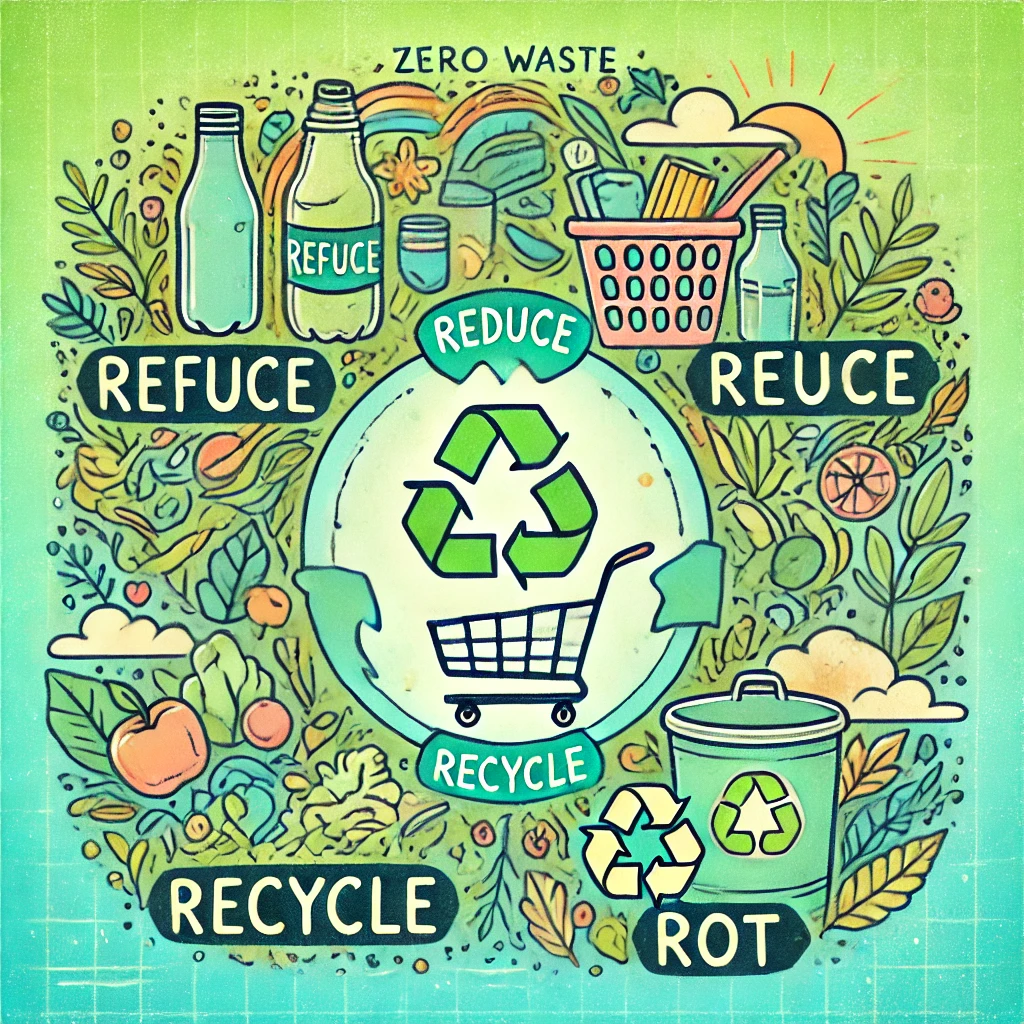
Sustainable Living and Eco-Friendly
10 Ways to Adopt a Zero Waste Lifestyle


DINKAR
11/8/2024
Introduction
In recent years, the zero-waste lifestyle has emerged as an inspiring movement for those seeking to make a positive environmental impact. Rooted in minimizing waste and reducing reliance on single-use products, this approach encourages us to think about our daily choices and how they affect the planet. While going fully zero-waste may feel overwhelming at first, starting small and building sustainable habits can make a significant difference over time. Here are ten practical steps to help you transition toward a zero-waste lifestyle, even if you’re just beginning your journey.
1. Rethink Your Shopping Habits
The way we shop plays a significant role in how much waste we produce. Avoid items with excessive packaging and opt for loose products or items in recyclable or biodegradable materials. Bringing reusable bags, jars, and containers when grocery shopping can help avoid unnecessary plastic use. Many stores even offer discounts when you bring your own containers, so it’s a win for both the planet and your wallet!
Quick Tip: Try planning a weekly shopping list. Knowing what you need helps prevent impulse purchases, reducing the likelihood of unnecessary waste.
2. Opt for Reusable Products
The simplest way to reduce waste is by switching to reusable alternatives for everyday items. Consider replacing disposable items with sustainable options:
- Swap plastic bottles for reusable water bottles.
- Use cloth napkins instead of paper ones.
- Trade disposable razors for a durable safety razor.
- Carry your own cutlery and straw kit if you frequently dine out.
These simple changes help reduce the demand for single-use products, helping minimize overall waste.
3. Embrace Composting
Organic waste, when sent to landfills, decomposes without oxygen and releases methane, a potent greenhouse gas. By composting kitchen scraps and yard waste, you can turn these materials into nutrient-rich soil. If you don’t have outdoor space, indoor composting bins or worm composting are excellent alternatives. Composting not only reduces waste but also gives back to the earth by enriching the soil.
Quick Tip: Start small by composting fruit peels, vegetable scraps, and coffee grounds.
4. Shop Secondhand
Thrift stores, consignment shops, and online secondhand marketplaces are great resources for buying gently used clothes, furniture, and household goods. Shopping secondhand gives items a second life, reduces demand for new products, and cuts down on manufacturing waste. Plus, you often find unique, high-quality items at a fraction of the cost.
Quick Tip: Consider organizing a clothing swap with friends or family. It’s a fun, eco-friendly way to refresh your wardrobe without spending a dime.
5. Reduce Food Waste
In the U.S. alone, food waste accounts for approximately 30-40% of the food supply. By planning your meals, making shopping lists, and properly storing produce, you can prevent food from going to waste. Learning to get creative with leftovers or overripe produce also reduces waste. For example, overripe bananas can be used in baking, while vegetable scraps can be boiled down for broth.
Quick Tip: Keep track of the expiration dates on perishable items and prioritize using them first.
6. Switch to Eco-Friendly Personal Care Products
Many personal care items come in plastic packaging that ends up in landfills. Transition to sustainable options such as:
- Shampoo and conditioner bars instead of plastic bottles.
- Reusable cotton rounds for makeup removal.
- Toothpaste tablets or powder over conventional tubes.
- Biodegradable bamboo toothbrushes.
With a growing number of zero-waste brands offering sustainable alternatives, it’s easier than ever to find eco-friendly products.
7. DIY Cleaning Products
Household cleaning products often come in single-use plastic containers and contain harsh chemicals. Making your own cleaning solutions is not only better for the environment but also for your health. Common ingredients like vinegar, baking soda, and lemon are natural, effective cleaners. You can store them in glass spray bottles for an eco-friendly cleaning arsenal.
Quick Tip: Create an all-purpose cleaner by mixing equal parts vinegar and water with a few drops of essential oils for a pleasant scent.
8. Reduce Paper Waste
With technology, reducing paper waste has never been easier. Go digital where possible by:
- Opting for electronic bills and statements.
- Using a note-taking app instead of notebooks.
- Reading news online instead of subscribing to physical newspapers.
If you need to print, consider using recycled paper or printing on both sides. You can also reuse old paper for notes, lists, or crafts to extend its life before recycling.
9. Refuse Freebies and Unnecessary Items
Promotional products, plastic bags, and single-use cutlery are often given out for free, but they contribute to waste. Politely decline these items and carry a zero-waste kit with you, including a reusable bag, utensils, and a water bottle. By refusing unnecessary items, you’re reducing waste at the source and promoting mindful consumption.
Quick Tip: Practice saying “no, thank you” when offered something you don’t need. It can be challenging at first but gets easier with time!
10. Join a Zero-Waste Community for Support
Joining a zero-waste community, whether locally or online, can provide motivation, inspiration, and tips for your journey. You’ll discover creative ways others are reducing waste and have access to resources and advice for overcoming common challenges. Engaging in community challenges, like “plastic-free July,” can make the journey more enjoyable and help you stay accountable.
Quick Tip: Follow zero-waste influencers or groups on social media for daily inspiration and new ideas to try.
Conclusion
Transitioning to a zero-waste lifestyle is about progress, not perfection. Even small changes, when practiced consistently, can have a significant impact over time. Remember that adopting a zero-waste lifestyle is a journey that’s about making mindful choices, reducing waste where possible, and staying committed to positive change. By incorporating these ten strategies into your life, you’ll not only reduce your environmental footprint but also inspire others around you to live more sustainably.